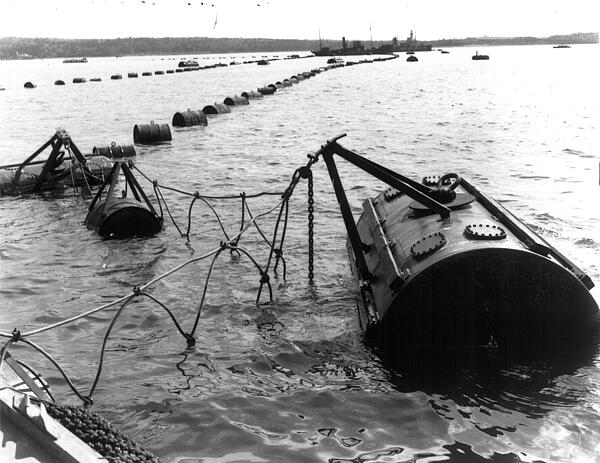Anti-submarine developments
Despite the hesitance of the Admiralty to accept submarines as a permanent and important part of the Royal Navy during World War One, the developments of submarine technology elsewhere in the world meant Britain had to dedicate some time and resources to anti-submarine warfare (ASW).
ASW is a branch of warfare that uses submarines, warships or aircraft to tackle the threat from enemy submarines. Ironically, the importance of advanced ASW was increased by the rapid development of submarines across the world, which was partly a result of Britain’s success with submarines.
Successful anti-submarine warfare requires a combination of a number of features, including location and tracking technology, and an effective deterrent, damage or destroy enemy submarines. The most efficient anti-submarine warfare relies on a combination of sensor and weapon technology, training and experience. Sonar equipment is the most effective means of locating and tracking down submarines, while torpedoes and naval mines are common methods of destroying and damaging them.

During World War One, submarines were still in their infancy in terms of their capabilities and were known for having to surface frequently. As such, the ASW strategies were often based around these vulnerable moments, with British warships, for example, being fitted with rams to sink submarines. In terms of protection, many battleships would defend themselves from torpedoes using chainlink nets, which were also deployed across harbour mouths to prevent torpedo entry.
While the Admiralty was reluctant to admit the efficiency of submarines, in July 1915 it set up the Board of Invention and Research to evaluate ASW suggestions from the public while also conducting research of its own. This was followed up by the creation of the Royal Navy Anti-Submarine Division, which carried on much of the ASW work after 1917.
While there were many different advancements created as a result of ASW research, arguably the most effective anti-submarine measure was the development of escorted convoys, which reduced the loss of ships entering Germany’s War Zone around Britain from 25 per cent to one per cent.
MLA Citation/Reference
"Anti-submarine developments". HistoryLearning.com. 2025. Web.
